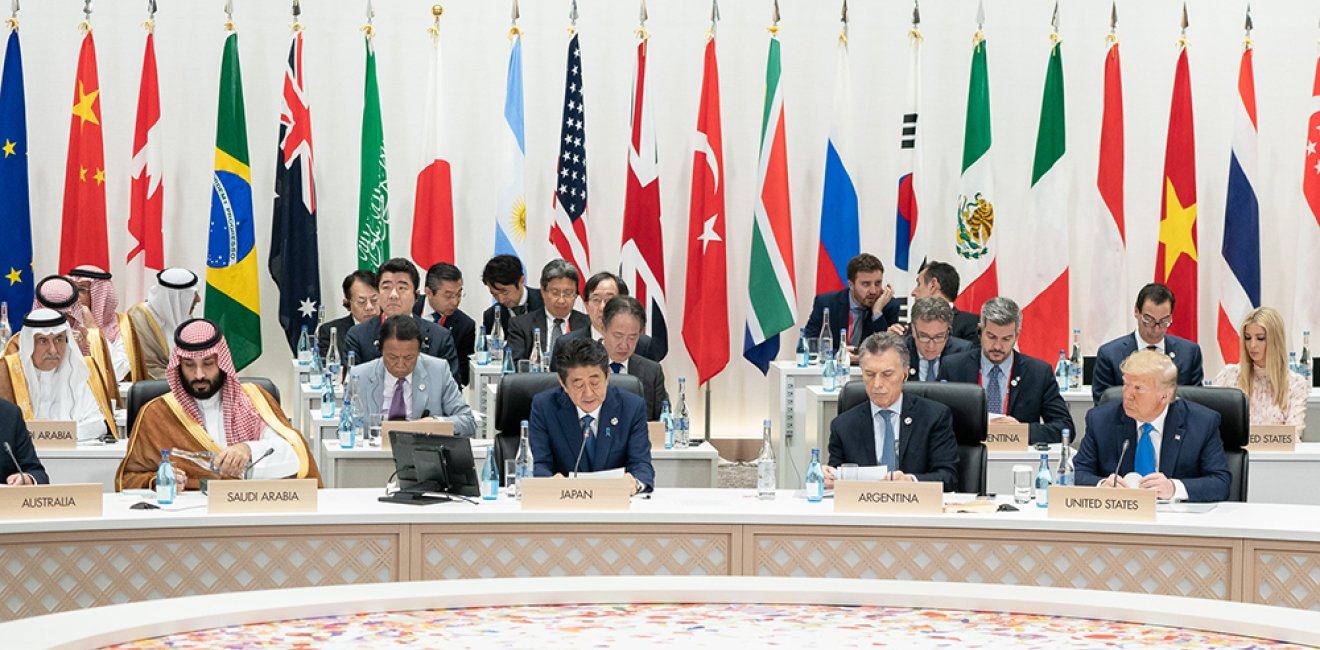
A blog of the Indo-Pacific Program
Risks to global growth still loom large, not least as trade tensions between China and the United States remain unresolved after the latest G20 summit. Yet the biggest takeaway from the Osaka meeting is that the real, long-term threat to global stability is not friction over tariffs and trade imbalances. Rather, the biggest source of instability is the growing divide between the world’s two largest economic and political powers, and the rest of the world. The Osaka summit may mark the beginning of developing a new post-war order, whereby industrialized countries are seeking ways to forge new partnerships to face new economic challenges without depending as heavily on Washington’s leadership.
To be sure, the risks facing the world are not as dire as they had been in 1999, when the Group of 20 was first established in response to the Asian financial crisis that had devastated the economies of Indonesia, Thailand, and South Korea in particular and threatened the global financial markets. The risks are certainly not as severe as in 2008, when the G20’s leaders first met in Washington to prevent the global financial crisis from destabilizing world growth even further. But while the G20 played a part in preventing a downward spiral, the reality has been that there has been a great widening of incomes worldwide, and a concentration of corporate influence, especially in key industries such as finance and technology.
As a result, the outcome of the latest Osaka meeting was lackluster at best.
The longer-term objective of the G20 therefore should be as much about addressing the inequalities and social disruptions that have become increasingly apparent since the first summit meeting over a decade ago. Certainly, the growing voices against free trade and globalization more broadly partly reflect the frustration of that widening schism. As a result, the outcome of the latest Osaka meeting was lackluster at best.
The fact that the G20 failed to denounce protectionism, in spite of international organizations including the IMF and the WTO warning about the negative impact of tariffs, was disappointing but not unexpected. Meanwhile, the most anticipated bilateral meeting on the sidelines of the conference between President Trump and Xi Jinping led to an agreement to resume trade negotiations which in itself is a welcome development. Yet with Trump deciding also to allow some U.S. companies to continue supplying Huawei is more of a step back than forward.
Firstly, the relaxing of rules against Huawei go directly against the Commerce Department’s decision only last month to stop sales to the Chinese telecommunications behemoth amid national security concerns. Secondly, it buys the Chinese leadership time to lower its dependence on U.S. supplies whilst being able to keep its immediate pipeline of components intact. On the other hand, the United States still has not made any real headway in developing its own home-grown 5G network.
Washington’s hawkish stance against Chinese trade practices and Trump’s willingness to push hard against Beijing had been welcomed by most industrialized nations, even if they had not been particularly enthused about the president’s methodology to challenge China. While a resumption of trade talks between the United States and China is welcome, Washington backing down on its hardline stance against Beijing’s unfair trade practices is worrisome, especially when the White House has no clear longer-term vision of how to ensure its competitive edge.
Yet the group appears more at a loss for leadership and consensus than ever...
The fact that all leaders of the G20 participated in the Osaka meeting was undoubtedly an achievement in itself. Yet the group appears more at a loss for leadership and consensus than ever, in spite of the significant hurdles facing the global economy being challenged by seismic shifts in industries on the one hand, and growing friction within nations as a result of economic divides on the other. It is unlikely that Saudi Arabia will be able to lead the way in defining a new road for multilateral economic cooperation when it hosts the G20 summit in 2020.
Image: The White House/Flickr
Follow Shihoko Goto, deputy director for geoeconomics and senior associate for Northeast Asia, on Twitter @GotoEastAsia.
The views expressed are the author's alone, and do not represent the views of the U.S. Government or the Wilson Center. Copyright 2019, Asia Program. All rights reserved.
Author


Indo-Pacific Program
The Indo-Pacific Program promotes policy debate and intellectual discussions on US interests in the Asia-Pacific as well as political, economic, security, and social issues relating to the world’s most populous and economically dynamic region. Read more





